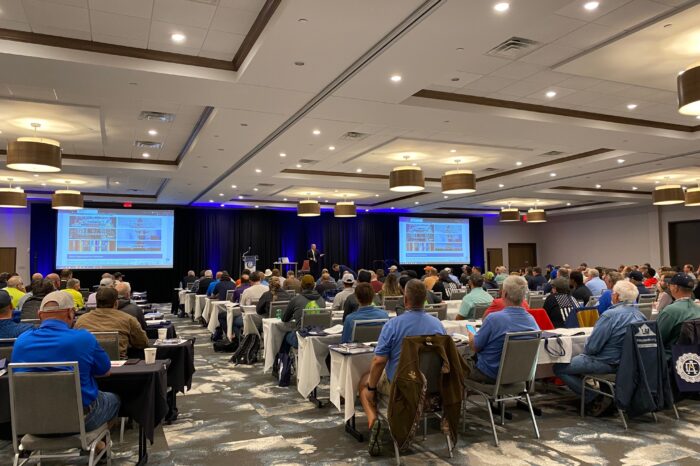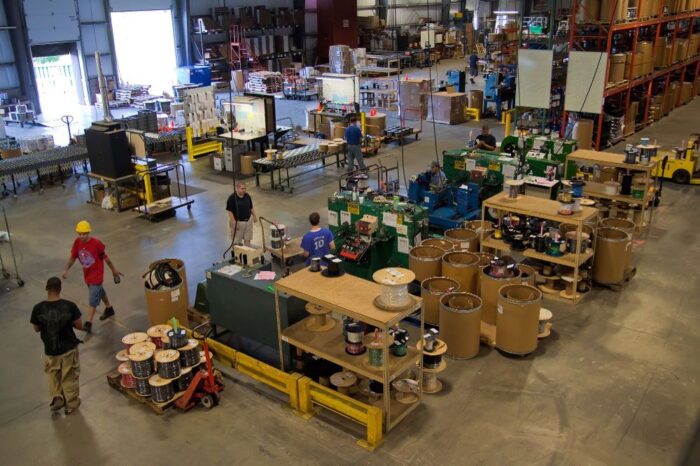Cable Technology Trends: How Does This Affect You?
Obviously the answer is “big time”. When we think of technology we think of ERP systems, CRM, eCommerce, perhaps mobility, RF for a warehouse and more from a tools perspective. From a “product” viewpoint there is LED, controls as well as software that runs many systems … and more.
 And then there are other areas where “technology” can create opportunities for manufacturers and distributors.
And then there are other areas where “technology” can create opportunities for manufacturers and distributors.
Keeley Schneider, Sr. Quality Control Engineer for TPC Wire & Cable Corp, had a different take on technology and the She shared her thoughts with this guest posting (and no, they are not a client.)
Changes in technology affect all businesses, including the electrical distribution industry. Here is a look at some of the emerging trends, including infrastructure, moves toward wireless technologies and e-commerce, and how these trends can affect the electrical industry.
Distribution and Infrastructure
In the report by Lucintel, Global Electric Utilities Industry 2012-2017: Trend, Profit and Forecast Analysis, the worldwide electric market is anticipated to reach $2,218 billion by the year 2017. Some of this is from major growth in renewable energy, storage systems and electric vehicles. The need to upgrade an aging infrastructure is another contributor to the estimated figure. The number also includes an increase in consumption due to large increases in the availability of appliances.
For businesses involved in electrical distribution, replacing distribution systems with equipment, wires and cables that can withstand a harsh environment and heavy use is becoming critical. Clients will be requiring more from the materials they purchase, including chemical, heat and impact resistance.
Businesses involved in communications are facing the same need for reliable equipment and the ability to handle major increases in use. Internet and cable systems must meet the increasing demand for speed and huge data transmissions. Equipment failures are not an option and the equipment and wire must protect against frequency interference.
Changing Requirements
The Occupational Safety and Health Administration (OSHA) is only one agency that sets regulations that industries must follow. The National Electrical Contractors Association (NECA) has published the National Electrical Installation Standards (NEIS) that addresses the electrical construction industry. NECA 416 is designed to detail the requirements for the installation of energy storage systems.
The 2017 edition of the National Electric Code (NEC) is expected to include new safety requirements as well as training, installation, maintenance and retrofitting standards for the industry. Your company should be proactive and prepared when it comes to meeting these requirements.
You may not be involved in installation, but you need to know the requirements to provide the right materials. Equipment labeling is a major part of some of the safety changes. While arc-flash hazard warnings have been required since 2002, changes include labeling of switchgear equipment and labels provided by the manufacturer, not just the installer. Labels must include nominal voltage, arc flash boundary and one of four options including minimum PPE requirements, working distance or highest risk category. Manufacturers and suppliers must be prepared to provide this labeling.
Wireless Technology and Suitable Wiring
Many companies are now using multiple internal networking systems. One system may provide the connections for all internal company communications while a separate system is in use for internal or external AV and teleconferencing. Wireless Application Protocol (WAP) equipment and access point antennas must meet the demand and provide the security businesses require.
Wireless extenders or boosters do not always provide enough of an increase in range. Ethernet and wireless bridges can be combined to overcome booster limitations. CAT5/6 or fiber optic cables are now the only types frequently used in any digital media and communication installations. While WAP provides wireless communication, wiring is still required in a facility to carry the signals.
With the increased need for wireless communication comes the need for better Ethernet cables. The technology is not just for executive conference rooms. Your steel manufacturing facility or industrial warehouse needs the same abilities. To achieve reliable service, you need to look at the advances in cabling.
CAT6 cable is available to meet harsh use and environmental conditions. Exterior cable protection and physical properties create an Ethernet cable that will resist abrasion, UV light, extreme temperatures, oil and chemicals.
CAT5E cables provide increased bandwidth and less interference than regular CAT5. They can be used to support Gigabit Ethernet, but are not rated as Gigabit. This choice is right for those that do not require extremes in speed, yet need better performance with less expense.
CAT7A cable is available for industrial applications that require a higher degree of flexibility. Internal shielding reduces electrical noise and jacketing is available to meet flame ret ardency requirements. Suppliers must be ready to meet the increasing demands for this technology.
It is no longer enough to recognize changes and trends in technology — you must be ready for them. Be proactive and stay a step ahead by knowing regulatory requirements and advances in power solutions, networking and communications.
About Keeley: Keeley Schneider is the Sr. Quality Control Engineer for TPC Wire & Cable Corp. in Macedonia, OH. TPC Wire & Cable is a leading wire and cable manufacturer that supplies industrial components used in harsh environments, such as composite cables, cable assemblies and electrical components. TPC’s products are designed and engineered to withstand harsh conditions including abrasion, chemicals, and extreme temperatures.
Are you seeing these as opportunity areas?





















